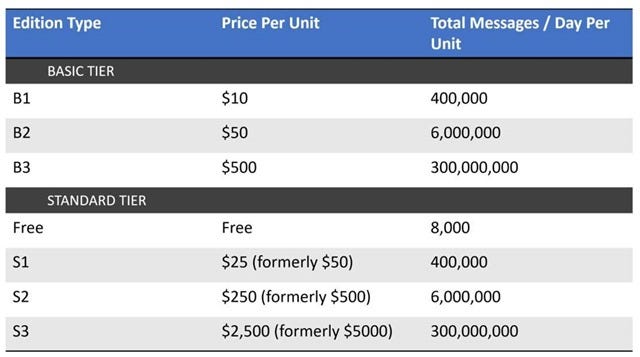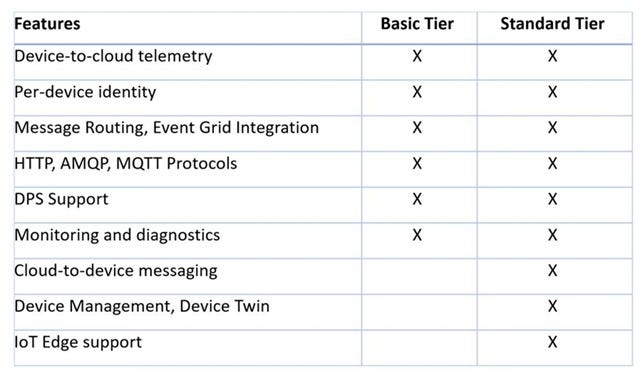Microsoft Pumps $5 Billion Into IoT, Eyeing a More Intelligent EdgeMicrosoft Pumps $5 Billion Into IoT, Eyeing a More Intelligent Edge
After breaking up its Windows group, Microsoft’s huge IoT investment points to bringing more intelligence to the edge beyond Windows.
April 9, 2018

Microsoft last week said it will commit $5 billion over the next four years to Internet of Things (IoT) technology, primarily in research and development. The bold commitment should result in a broader portfolio of IoT wares and services for partners to deliver in the coming years. But it also underscores the work the company still has ahead of it to become more competitive in the potentially lucrative IoT market, despite aggressively emphasizing it as a key priority with several key offerings and developer programs.
Many saw the move as the other shoe dropping, following Microsoft’s announcement that longtime senior Microsoft exec, Terry Myerson, who led the company’s Windows and Devices group, was leaving the company. Myerson’s departure coincided with CEO Satya Nadella’s major technology group restructuring, marking the disbanding of the Windows and Devices team into the new Cloud and AI and Devices and Experiences groups. In announcing the reorg, Nadella stressed the move was focused on the cloud and “intelligent” edge as key focal points of the future. This latest announcement brought more clarity to Nadella’s emphasis on the edge.
“Our goal is to give every customer the ability to transform their businesses, and the world at large, with connected solutions,” said Julia White, Microsoft’s corporate VP for Azure, in a blog announcing the initiative.

Julia White
Julia White
While White didn’t elaborate on how the funds would be invested, she described the announcement as significant.
“It positions us to support customers as they develop new and increasingly sophisticated IoT solutions, which few could have imagined just a few years ago,” she said.
Building on Existing IoT Efforts
If the latest announcement appeared somewhat curious, it’s because Microsoft has talked up IoT quite extensively over the past few years. The Azure cloud portfolio now consists of several IoT services including IoT Hub, IoT Suite and IoT Edge. Microsoft also has bolstered Windows 10 IoT Core with new APIs, Universal Windows Platform (UWP) support and the ability for .NET developers to more easily port code and libraries to Windows 10 IoT devices with .NET Standard 2.0 integration.
A year ago, Microsoft launched IoT Central, a software-as-a-service (SaaS)-based portal made available at the time as a limited preview, designed to simplify management of IoT implementations. Microsoft extended IoT Central into a public preview back in December. On Tuesday, just a day prior to the $5 billion investment, Microsoft slashed the cost of Azure IoT Hub, its platform for registering, provisioning, managing, securing and providing bidirectional communications and data-ingestion services.
The price cut includes a 50 percent reduction in the cost (see Figure 1) of the Azure IoT Hub “standard” tier, as well as the introduction of a new lower cost “basic” tier (see Figure 2), which offers a subset of functionality for customers and partners starting out.

Figure 1
Figure 1

Figure 2
Figure 2
“We’ve also been busy building efficiencies into our Azure IoT Hub while dramatically increasing the reliability, scale, and performance of the service — far surpassing the scale and performance needs of our most demanding commercial IoT customers,” said Sam George, Microsoft’s Azure IoT partner director, in a blog announcing the new service and price reduction.
Aiming for More IoT Traction
Despite these efforts, Microsoft’s restructuring followed by these latest moves reflects a realization that the company needs to refine its efforts and improve its reputation in IoT.
“Microsoft understands the opportunity and needs to make big investments in the space to get serious traction,” said Patrick Moorhead, president and principal analyst with Moor Insights & Strategy. “The edge is the next frontier and many companies are vying for the same spot, so Microsoft has their work cut out for them. Microsoft doesn’t have a big reputation in IoT and will need to build that. Many look to companies like Cisco, Dell, HPE, and even IBM for IoT.”
In addition, Amazon Web Services (AWS) and Google have strong IoT offerings.
“What Microsoft and other companies are now realizing is that IoT really is here to stay, but it does require significant investment,” said Jimmy Garcia-Meza, CEO of CloudPlugs, a Reston, Virginia, digital-service provider focused on providing cloud-based IoT solutions.

Jimmy Garcia-Meza
Jimmy Garcia-Meza
CloudPlugs solutions supports AWS and Azure, though its Cloud Edge IoT platform runs in Google Compute Engine. Built in Docker, the container-based platform offers data ingestion and message queueing at a speed of 1 million messages per second. In addition to supporting multiple public clouds, it can run on Linux and Windows Servers, and private-cloud infrastructure such as OpenStack and AzureStack.
Refocusing at the IoT Edge
Garcia-Meza said Microsoft’s latest announcements, and his ongoing discussions with the company, suggest a redirection from emphasizing investments in Windows 10 IoT endpoints to creating a more intelligent edge. The shift comes from the reality that most embedded devices with IoT capability run Linux, not Windows. That’s because of the overhead and cost of Windows, coupled with the lightweight footprint, and open source and extensible nature of Linux.
“I think what Microsoft is saying now is. ‘OK, I don’t care what operating system runs on the edge, so long as that edge device connects to my cloud.’ So Microsoft has to either create an agent that runs on the edge or connect into agents like our SmartPlugs,” he said.
SmartPlug IoT Agent and the company’s Edge One platform both use programmable agents that feed data from endpoints to IoT edge gateways and connect to a cloud-based message broker for IoT data ingestion. Its service can process up to 1 million messages per second, according to Garcia-Meza.
Microsoft’s ability to successfully develop a programmable endpoint agent, if it goes that route, could compete with CloudPlugs. Garcia-Meza said that’s not a major concern, as sometimes his competes with Microsoft, but it also considers the company a partner, depending on what the customer requires.
“We provide core components of the infrastructure, but we don’t provide all the components,” he said. “If somebody wants to do advanced stream analytics or machine learning or some other type of business-intelligence analysis with something like Microsoft’s Power BI, or some other tools, we’ll help them integrate with them. We don’t build all of the technologies that are important elements of the solution, which is why we partner with companies like Microsoft, AWS or Google.”
About the Author
You May Also Like


